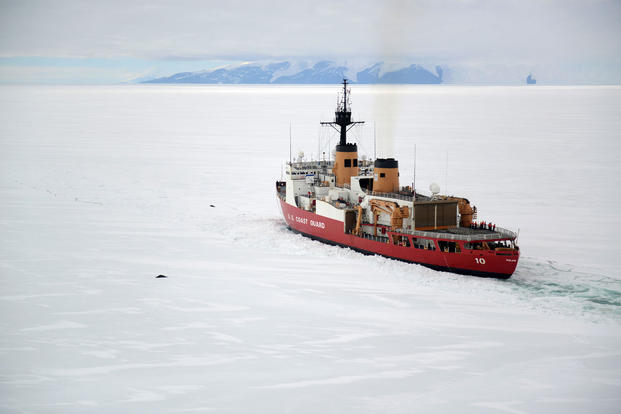The Coast Guard finds itself in a significantly different budget environment this year -- not only is the service requesting a sizeable bump in funding, the money would help pay for its first new heavy icebreaker in 40 years.
The service asked for a total of about $11.7 billion in funding for fiscal 2019, an increase of $979 million, or 8.4 percent, over its previous request, according to a document released Monday as part of President Donald Trump's budget request.
Last year, by comparison, the service faced a $1.3 billion cut before launching a massive and ultimately successful public relations campaign to underscore its importance to national security despite being the smallest of the U.S. military services and the only one to fall under the Department of Homeland Security rather than the Defense Department.
The additional money for the fiscal year beginning Oct. 1 would include $750 million for a new heavy icebreaker slated for delivery in 2023, according to the budget document. The funding would go toward building "the Nation's first new heavy Polar Icebreaker in over 40 years," it states.
The money "continues efforts to award a contract for detail design and construction to maintain scheduled delivery for a new icebreaker in 2023. Specifically, funding provides detail, design, long lead time materials, construction, program management office support, feasibility studies and maintaining the indicative design, cybersecurity planning, project resident office initiation, and Navy reimbursable technical support," the document continues. "This acquisition is recapitalizing the Coast Guard's heavy polar icebreaker fleet."
The Coast Guard wants to replace the barely seaworthy Polar Star for Arctic missions with a fleet of three heavy icebreakers. Last fall, it released a draft request for proposals from potential builders for a new heavy icebreaker design. The service also wants to build three medium icebreakers.
Coast Guard Commandant Adm. Paul Zukunft has said the ships are needed in the Arctic as ice melts, sea lanes open up, and a race begins with Russia and China to seize advantage in the region.
In other big-ticket equipment items, the service's fiscal 2019 budget also includes $400 million in funding for an offshore patrol cutter. The funding would enable the Coast Guard "to begin construction of the second OPC and Long Lead Time Material for the third OPC," a vessel designed to replace the Medium Endurance Cutter classes on the high seas and coastal approaches, according to the budget document.
The budget request also includes $240 million in funding to buy four new fast response cutters (FRCs), designed to replace the 110-foot patrol boats and to enhance the service's ability to conduct search-and-rescue operations, enforce border security, interdict drugs, uphold immigration laws and prevent terrorism, the document states.
The service's proposed budget request would support a total workforce of 87,643, including 40,863 full-time military personnel, 7,780 full-time civilian personnel, 7,000 reservists and 32,000 auxiliary members, according to the document. That represents a 3 percent increase over the current year, mostly due to an expected rise in the number of auxiliary members.
Overall, the Coast Guard budgeted $7.8 billion for operating expenses, including pay; $1.9 billion to recapitalize equipment; and $1.9 billion in mandatory spending and fees.
-- Hope Hodge Seck contributed to this report.
-- Brendan McGarry can be reached at brendan.mcgarry@military.com. Follow him on Twitter at @Brendan_McGarry.













